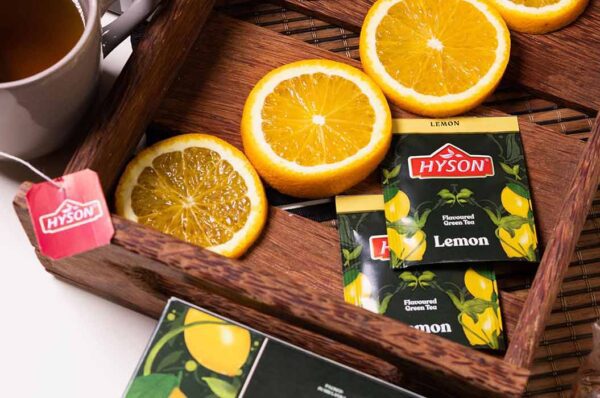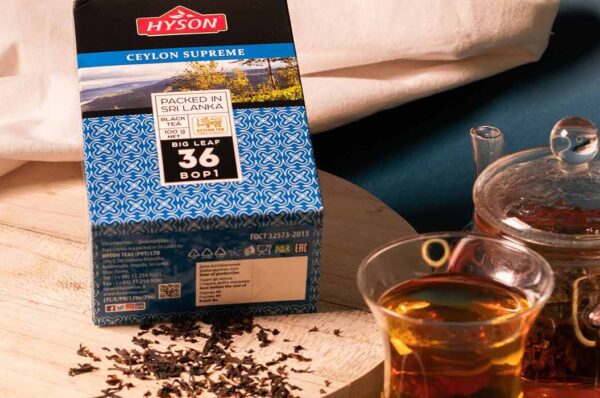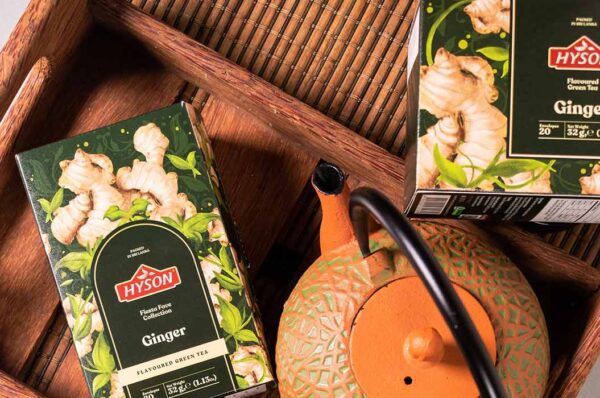
Indulge in the Exquisite Flavors with Hyson Tea’s Fruit Tea Collection
Nestled within the verdant landscapes of Sri Lanka’s tea region lies a hidden gem of diverse flavors awaiting exploration. Hyson Tea, known for its esteemed
Explore Hyson, where passion and perfection infuse every blend. With a global presence in over 20+ countries, we’re committed to delivering top-quality teas. Whether you savor classic black, vibrant green or Refreshing Infusion our range caters to all tastes with bags, tins, and gift packs.
From traditional to innovative blends, our teas, certified by BRC, ISO 9001:2015, FSSC 22000, Organic (EU/USDA/JAS), Kosher, and Halal standards, delight consumers worldwide. Led by founder Lushantha de Silva, a third-generation tea master, Hyson embodies excellence. Join us on a flavorful journey where every cup embodies dedication and expertise.
Hyson Teas enjoys an overwhelming presence across the world, distributing and exporting to over 20+ nations. We are also proud to be one the most sought after Tea exporters in the island.

“From their exquisite flavors to their commitment to quality, each cup is a testament to their dedication to crafting the perfect brew. I can’t imagine starting my day without it!”

“As a tea enthusiast, I’ve tried many brands, but none compare to the rich taste and aroma of Hyson Tea. Whether I’m enjoying their classic blends or exploring their unique flavors.”

“Their teas are not only delicious but also ethically sourced and sustainably produced, making me feel good about every cup I enjoy. Thank you, Hyson, for setting the standard in quality and taste!”

“From their elegant packaging to their exceptional teas, Hyson has won me over as a loyal customer. Each variety offers a distinct flavor profile that never fails to impress. Whether I’m unwinding after a long day or hosting friends.”

“Hyson Tea has become a staple in my household, and for good reason. Their teas consistently deliver on flavor, quality, and freshness, making every tea-drinking moment a true pleasure.”
The quality of tea isn’t determined by the size of its particles, referred to as its grade; instead, this aspect influences its strength. Our tea-making process follows traditional, artisanal methods, involving withering, rolling, and, in the case of black tea, fermenting and baking the leaf. During rolling, the leaf may take on various forms, such as elongated and wiry, tightly curled, or smaller particles, resulting in grades like OPA, Pekoe, BOP, or finer Dust or Fannings.
A single batch of high-quality leaf can produce multiple grades, all of which are equally good. The only distinction lies in the size of the particles, which affects strength. This relates to the leaf’s surface area when brewed with hot water. For instance, a teaspoonful of Dust tea can have four times the surface area of an equivalent quantity of OPA, leading to better extraction and a thicker, stronger brew.
The taste, color, and mouthfeel of tea are influenced by the interplay between its two primary components: polyphenols and caffeine. While each component individually contributes astringency, their interaction in a complex reduces this characteristic. Water naturally absorbs gases from the air, including carbon dioxide (CO2), which affects its acidity. The acidity of water is crucial for the ionization of tea polyphenols and contributes to the stability of the polyphenol-caffeine complex.
During boiling, CO2 is gradually released from the water. Reboiling further diminishes CO2 levels, reducing acidity. This alteration affects the polyphenol-caffeine complex, leading to changes in brew color and character. Using twice-boiled water can alter the taste of tea, impacting its quality. Therefore, we recommend using freshly boiled water for brewing Dilmah tea to ensure optimal taste extraction and a robust brew.
Green tea, along with Oolong and Black tea, originates from the Camellia Sinensis plant. Despite their distinct flavors, they share the same caffeine content, which ranges from 2.5% to 4% per cup, approximately one-third of that found in coffee. Interestingly, it’s suggested that about 80% of the caffeine in tea remains unabsorbed by the human body. Thus, while the taste of Green, Oolong, and Black tea may vary, their caffeine levels remain consistent.
Teas are classified as decaffeinated when their caffeine content does not surpass 0.4% by dry weight, equating to roughly 4 mg of caffeine per 170 ml serving.
Decaffeination involves removing caffeine from tea. Presently, common methods for decaffeinating black tea include solvent-based extraction using ethyl acetate or methylene chloride, as well as extraction using supercritical (solid) carbon dioxide. All three techniques effectively extract caffeine while preserving the tea’s quality.
Tea flavonoids interact with iron, leading to a reduction in its absorption. However, consuming tea between meals does not affect iron absorption. While concerns have been raised regarding iron consumption, current research and dietary understanding suggest that tea is unlikely to pose a health risk for individuals following a typical Western diet.
Dietary iron exists in two forms: heme iron (from animal sources) and non-heme iron (found in plants). The body absorbs heme iron more efficiently than non-heme iron. Approximately 15-35% of heme iron and 2-20% of non-heme iron are absorbed. Non-heme iron absorption is typically influenced by other dietary components. Certain components in grains, fruits, vegetables, and tea polyphenols can reduce iron availability to the body. However, studies indicate that tea only diminishes iron absorption when consumed concurrently with foods containing non-heme iron. Drinking tea between meals has no impact on iron absorption.
Furthermore, the ability of tea polyphenols to reduce iron absorption is mitigated by the presence of other dietary components, particularly ascorbic acid (which enhances non-heme iron absorption) and milk. To counteract any potential reduction in iron absorption, simply add milk or lemon to tea. If a meal includes milk, tomatoes, orange juice, or any form of ascorbic acid, these can also balance iron absorption when tea is consumed.

Nestled within the verdant landscapes of Sri Lanka’s tea region lies a hidden gem of diverse flavors awaiting exploration. Hyson Tea, known for its esteemed

In the world of tea lovers, few blends match the comforting familiarity of English Breakfast Tea. With its bold flavor and refreshing aroma, this cherished

Elevate your daily routine with Hyson Teas. Experience the difference as each sip transports you to a world of serenity and renewal.
Your cart is empty Continue Shopping